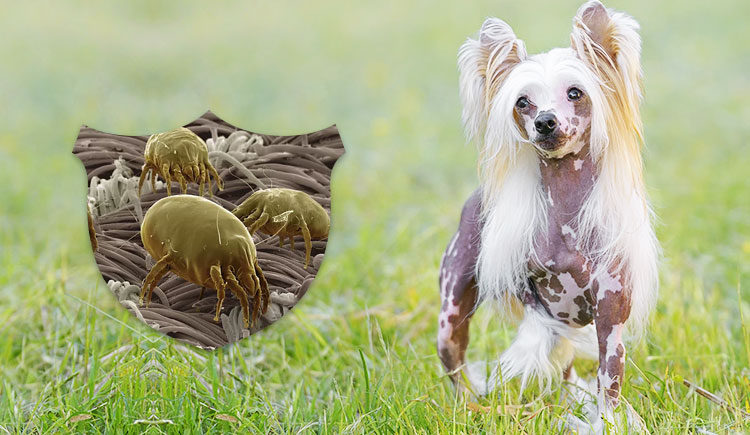Pets are very closely attached to our soul, whose mere presence makes our life worth living. And to make their life happy, we strictly follow certain protocols of pet care providing the best care. Whether it is related to provide protection against the most common parasitic infestations such as flea and tick or controlling the most dangerous disease – heartworm, we never leave a stone unturned. But, rarely… We realize that pets are not only prone to flea and tick parasitic infestations or heartworms but are also at the higher risk of demodex mange infection, which is ominous and can make your pet life miserable.
Quite common in dogs, mange is a skin disease which is caused due to demodex mite. These mites are microscopic in nature and largely dwell inside the hair follicles and the oil glands of your dog or cat’s skin or at the skin surface.
Mange Is Quite Common In Most Animals – Why?
Huge population of mites are present in many animals. Unbelievably, most healthy animals are able to inhibit the population before they can be a cause of problem. It’s only in certain cases that the pet suffers from demodectic mange the reason being a weak immune system or a medical condition.
Though not much is known about mites, few facts may surely trigger concern in pet parents.
Some Major Facts About Demodex Mange
In the midst of various uncertain causes of mite infestation, the most singled-out cause of infestation is the exposure to mites, as they reproduce and live on dogs.
Other Common Reasons Are
- Crowded kennel exposure
- Dog being exposed to the regions highly infested with mites
- Demodex mite attacking the mite
- Sarcoptic mange mite coming into contact with the dog
- Your dog being outdoors for a very long time
- Playing with soil or coming into contact with decaying vegetation
Though the causes may vary, the most common symptoms lift the veil and enlighten pet owners about the subsequent prevailing infection in pets. So, it is crucial that pet parents get well acquainted with the symptoms that can possibly help them to figure out the infection and provide the treatment accordingly.
Symptoms of Mange Infestation
The most common mange infestation symptoms that are visibly seen on pet are
- Severe itchy skin
- Intense skin irritation
- Hair loss
- Bald spots
- Inflamed patches on the skins
- Sores
- Fever
- Scabs
- Decreased appetite
- Malaise and tiredness
Finding any of the above symptoms on your pet, it is crucial that you provide the treatment to your furry pal.
Treatment
There are several different types of treatments available that can help in dealing with mange. Some vets prefer topical treatments while others may prescribe oral medications depending on the severity, symptoms, and the tolerance of your furry pal.
[otw_shortcode_button href=”https://www.budgetpetworld.com/flea-and-tick/revolution-for-cats/p56.aspx?utm_source=intblog&utm_medium=seo&utm_campaign=img-mange-infestations-discover-the-things-you-dont-know-about-mites” size=”medium” icon_position=”left” shape=”square” border_color=”#25c6e6″ target=”_blank”]Buy Revolution at Lowest Price | Free Shipping![/otw_shortcode_button]
Topical Treatments
There is a large array of topical treatments that effectively eradicate mite infestations. Shampoos, lotions, spot-ons like Revolution, Frontline Plus, sprays, powders, and dips are available that efficiently work on pets to treat mites.
Oral Treatments
Vets usually prescribe oral medication to pets with sensitive skin. The medications with Ivermectin as the main ingredient are highly effective.
Prevention – It is ALWAYS VIABLE than the Suffering
As mites are microscopic, it is quite difficult to figure out mite infections until the symptoms surface out. Therefore, the ultimate option for the prevention of mite infection is monthly flea and tick preventives that aid in effective control of mite infestations.


